1. Match the pairs and explain.
Ans.
(1) Growth of pollen tube towards ovules – Chemotropic movement
(2) Growth of shoot system- Phototropic movement
(3) Growth of root system- Gravitropic movement
(4) Growth towards water- Hydrotropic movement
Complete the paragraph.
Ans.
The milk was on the stove. Rasika was engrossed watching television. She smelled something burning. She ran towards the kitchen. The milk was boiling over. She held the vessel with her bare hands but, screaming, she let it go at once. This activity was controlled by nerve cells. Special ends of dendrite in these cells collected the information, from where it was transferred to the cell body and then towards the terminal end of the axon The chemicals produced at the terminal end passed through the minute space i.e. synapse In this way, impulse were conducted in the body and the process of reflex action was completed by conducting the impulses from nerve cell to muscle cell
3. Write notes on:
Root pressure
Ans.
(1) Root cells are in contact with water and minerals in the soil. (2) Water and minerals enter the cells of the root surface due to difference in concentration. As a result, these cells become turgid. (3) This is called root pressure. (4) Under the effect of this pressure, water and minerals reach the xylem of the roots and to reduce this difference in concentration they are continuously pushed forward. (5) As a result of this continuous movement, a water column is formed, which is continuously pushed ahead. (6) This pressure, is sufficient to lift the water up in shrubs, small plants and small trees.
Transpiration
Ans.
(1) Plants give out water in the form of water vapour through the stomata on their leaves. This is known as transpiration. (2) Two cells called guard cells are present around the stomata. They control the opening and closing of stomata. (3) Water is released into the atmosphere by leaves through the process of evaporation. (4) As a result, water in the epidermal layer of the leaf decreases. (5) Water is brought up to the leaves through the xylem to compensate for the lost water. (6) Transpiration helps in absorption of water and minerals and distribution to all parts of the plant.
Nerve cell
Ans.
(1) Special types of cells which conduct impulses from one place to another in the body are called neurons (nerve cell). (2) Neurons are the structural and functional units of the nervous system. (3) Nerve cells, the largest cells in the human the body, may measure up to a few metres in length. (4) Nerve cells have the ability to generate and conduct electrochemical impulses. (5) The cells that support the nerve cells and help in their functioning are called neuroglia. Nerve cells and neuroglial cells together form the nerves.
Human brain
Ans.
(1) The brain is the main controlling part of the nervous system and it is safely located in the cranial cavity. (2) The spinal cord is protected by the vertebral column. (3) In the space between the delicate central nervous system and its bony covering are the protective layers called the meninges. (5) The ventricles, central canal and spaces between the meninges are filled with cerebro-spinal fluid. (6) This fluid supplies nutrients to the central nervous system and protects it from shock. (7) The brain of an adult human weighs about 1300 – 1400 grams and consists of approximately 100 billion neurons. (8) The left side of our brain controls the right side of our body and right side of our brain controls left side of the body.
The human brain has the following parts:
(1) Cerebrum: This is largest part of our brain and consists of two cerebral hemispheres. These hemispheres are joined with each other with the help of tough fibres and nerve tracts. The cerebrum occupies two-thirds of the brain. Hence, it is also called the large brain. (2) Cerebellum: This is the smaller part of the brain situated below the cerebrum at the back of the cranial cavity. Its surface shows shallow grooves instead of deep convolutions. (3) Medulla oblongata: This is the hind-most part of brain. There are two triangular swollen structures called pyramids on the upper side of medulla oblongata. The medulla oblongata continues downwards as the spinal cord.
Reflex action
Ans.
(1) An immediate and involuntary response given to a stimulus from the environment is called a reflex action. (2) Sometimes we react to an incident without any thinking on our part or control over the reaction. This is a response given to a certain stimulus from the surroundings. (3) In such situations, proper control and co-ordination is achieved even without intervention of the brain.
4. Name the hormones of the following endocrine glands and the function of each.
Pituitary
Ans.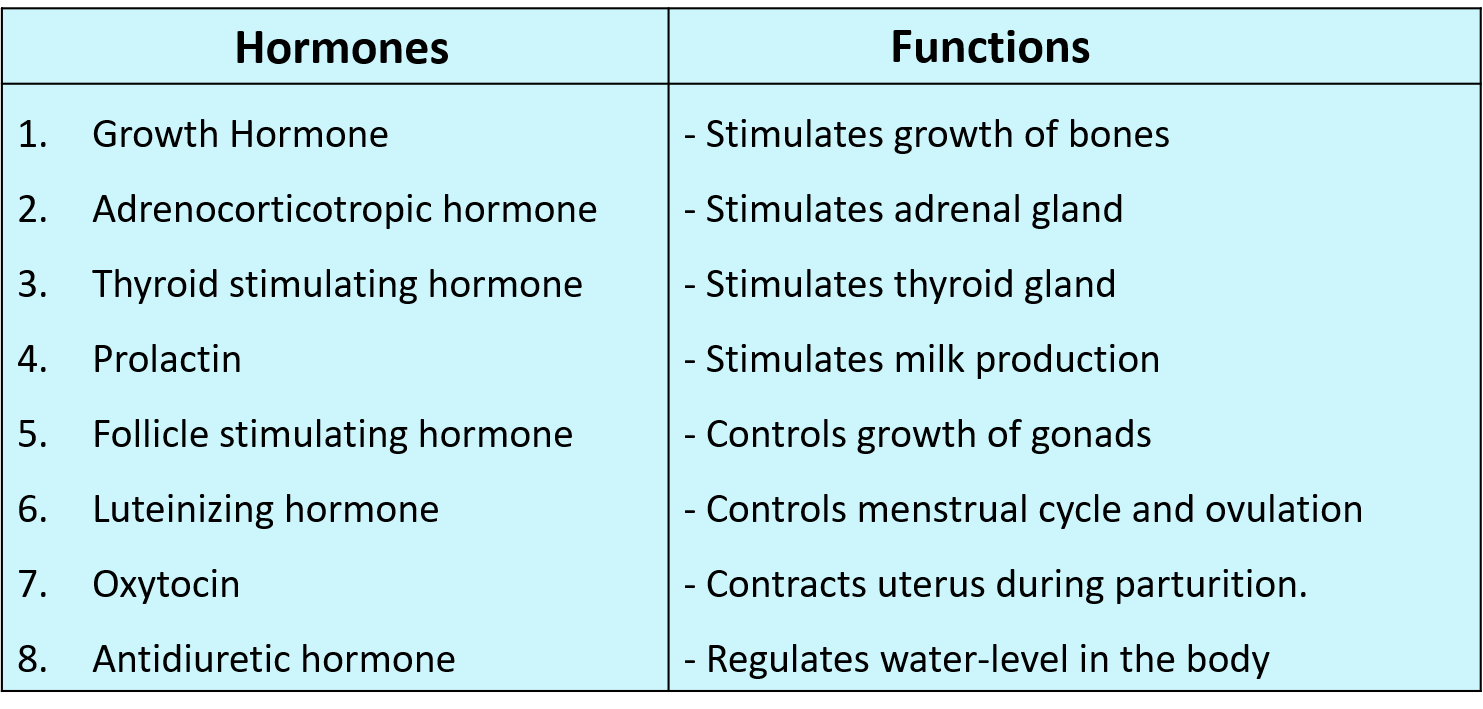
Thyroid
Ans.

Adrenal
Ans.

Thymus
Ans.
Testis
Ans.
Ovary
Ans.

5. Draw and label the diagrams.
Human endocrine glands
Ans.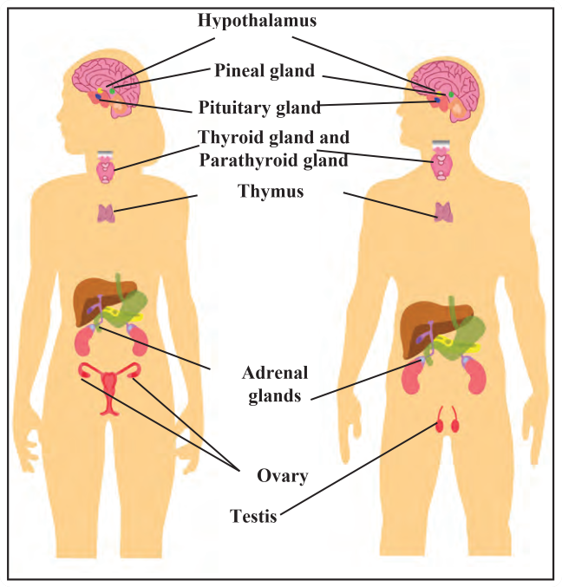
Human brain
Ans.
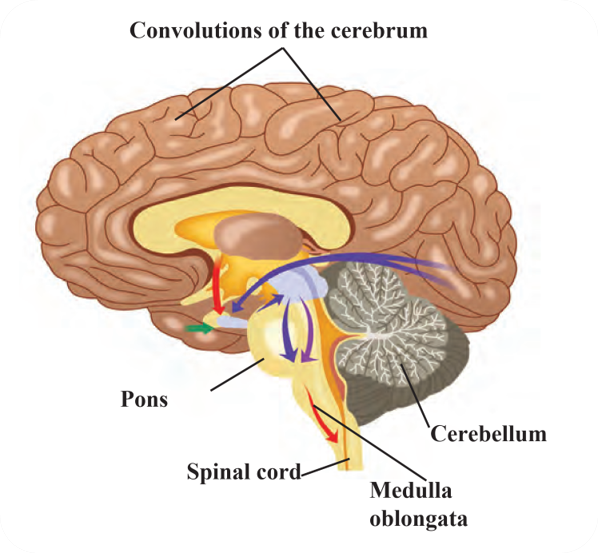
Nephron
Ans.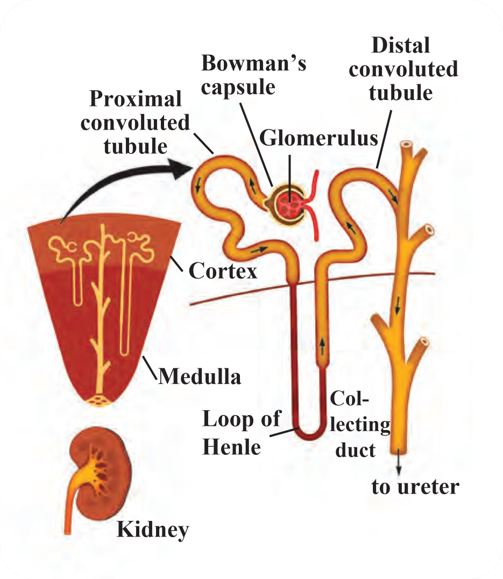
Nerve cell
Ans.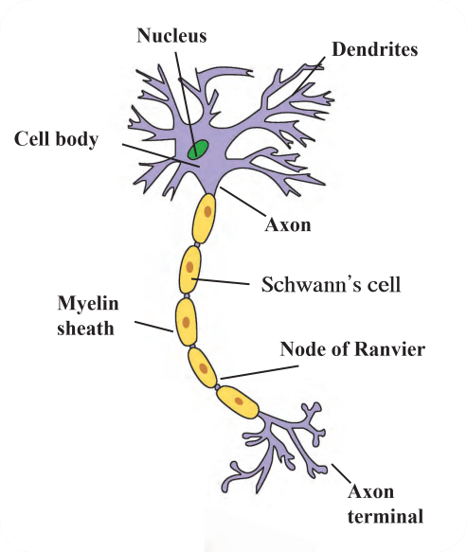
Human excretory system
Ans.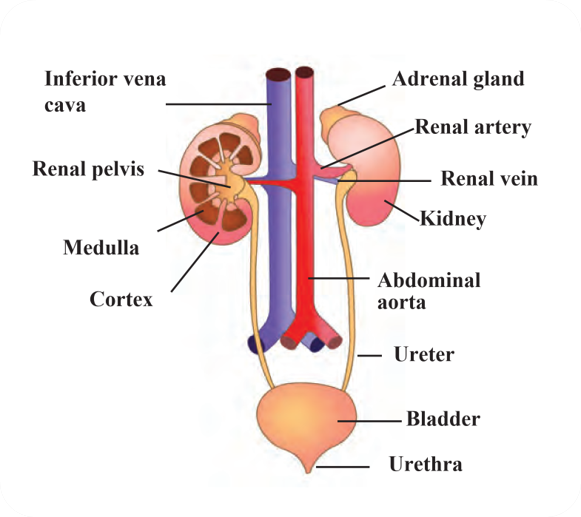
6. Answer the following.
a. Explain chemical co-ordination in humans and give the names and functions of some hormones.
Ans.
(1) Control and co-ordination in our body is also brought about with the help of certain chemical substances called hormones. (2) Hormones are secreted by endocrine glands. These glands are also called ductless glands. (3) Hence, as soon as hormones are produced, they are directly released into the blood circulation. (4) Endocrine glands along with the nervous system are responsible for the control and co-ordination in our body. (5) These two systems help each other to control and integrate the various activities of the body. (6) A marked difference between these two systems is that nerve impulses are fast but short lived whereas the action of hormones is very slow but long lasting.
Names and functions of some hormones:
(a) Growth hormone: Stimulates growth of bones.
(b) Thyroxine: Controls growth of body and metabolic activities.
(c) Luteinizing hormone: Controls menstrual cycle and ovulation.
b. Explain the difference between the excretory system of humans and plants.
Ans. 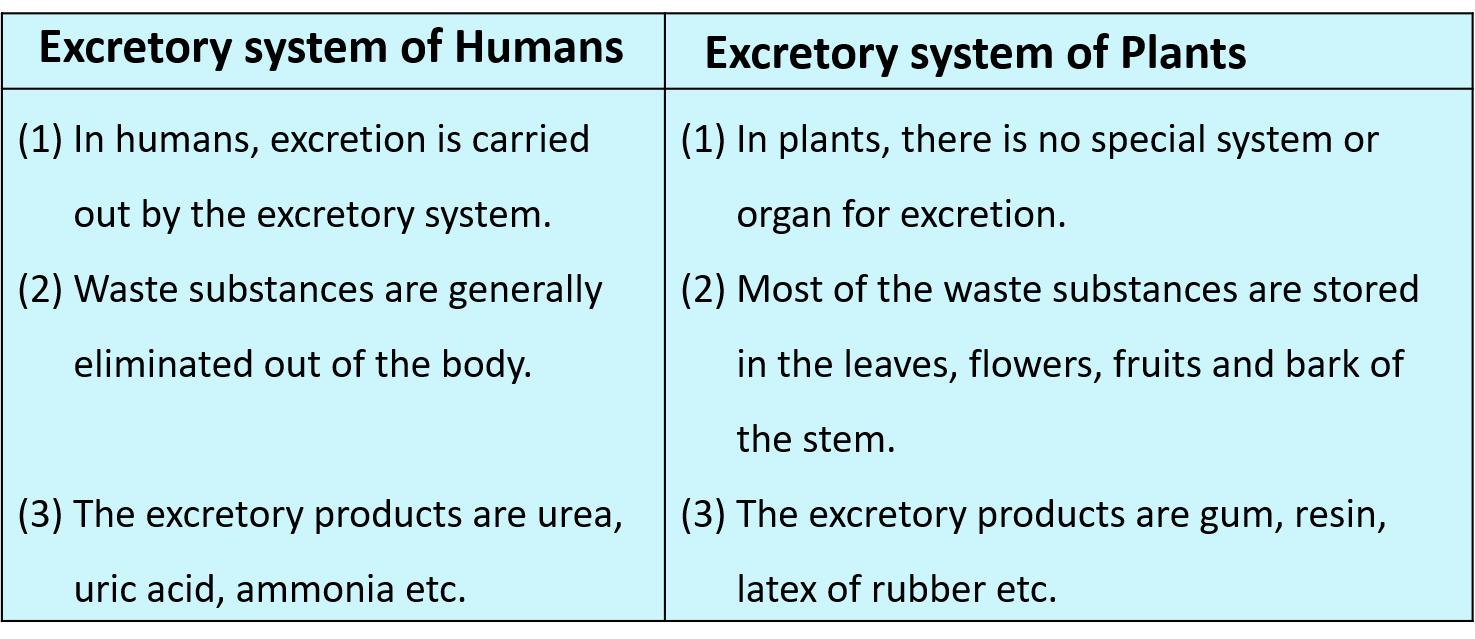
c. Explain co-ordination in plants with the help of suitable examples.
Ans.
(1) Plants do not have systems like the nervous system or muscular system. (2) In plants, movements are mainly in the form of responses given to the stimuli. (3) Plants show two types of movements – growth relevant movements and growth irrelevant movements. (4) Movement or growth of any part of the plant in response to an external stimulus is called ‘tropism’ or ‘tropic movement’. (5) The shoot system of any plant responds to the light stimulus hence called as ‘Phototropic movement’. (6) The root system of plants responds to stimuli like gravitation and water. These responses are called ‘gravitropic movement’ and
‘hydrotropic movement’ respectively. (7) Movement shown by plants in response to specific chemicals is called ‘chemotropic movement’. For example, the growth of the pollen tube towards the ovule. (8) Some specific movements of the plants do not lead to the plant’s growth. Such movements are called ‘growth irrelevant movements’. (9) Examples of growth irrelevant movements are closing of leaflets of Touch-me-not (Mimosa) plant on touch.
7. Explain in your own words with suitable examples.
a. What is meant by co-ordination?
Ans.
(1) Several different organ systems function in multicellular organisms. (2) Their life goes on smoothly if there is co-ordination between the different organ systems or organs and the stimuli in the surrounding.(3) Depending upon this, we can say that systematic regulation of different processes can be called control and bringing about the different processes in the proper sequence can be called co-ordination. (4) E.g. Beating of heart and respiration is always coordinated with each other.
b. How does excretion occur in human beings?
Ans.
(1) The human excretory system consists of a pair of kidneys, a pair of ureters, the urinary bladder and the urethra. Urine is formed by the kidneys by separating the waste and unwanted excess substances from the blood. (2) The functional unit of the kidney that performs the basic function of filtration is called a nephron. (3) The urea produced in the liver comes into the blood. When the urea-containing blood comes into the glomerulus, it is filtered through its capillaries and urea and other similar substances are separated from it. (4) Water molecules and small molecules of some other substances can cross the semipermeable membrane of Bowman’s capsule. (5) The solution accumulated in the cavity of Bowman’s capsule passes into the tubular part of the nephron. (6) Here, molecules of water and some other useful substances are reabsorbed into the blood. (7) Urine is formed from the remaining solution which is full of waste materials. The urine is carried by the ureters and stored in the urinary bladder. (8) Afterwards, urine is given out through the urethra.
c. How is excretion in plants useful to human beings?
Ans.
(1) Some of the excretory products of plants are rubber, wax, gums, resins. (2) All these products are used by humans in their daily activities. (3) E.g. the latex of rubber gives various rubber products.
d. Describe the transportation system in plants.
Ans.
(1) The transport system in plants consists of xylem and phloem. (2) During transpiration, water is released into the atmosphere. (3) As a result, water level is the epidermal layer of the leaf decreases. (4) Water is brought up to the leaves through the xylem so as to compensate for the lost water. (5) Transpiration helps in absorption of water and minerals and distribution to all parts of the plant whereas root pressure preforms the important role of pushing the water up at night time. (6) The food produced by leaves is transported to each cell of the plant through phloem. (7) Whenever the food material like sucrose, is transported towards a part of the plant through phloem, using ATP, the water concentration in that part decreases. (8) As a result, water enters the cell by diffusion. The pressure on the cell wall increases due to increase in the cellular contents. (9) Due to the increased pressure, food is pushed into the neighbouring cells where the pressure is low. (10) This process helps the phloem to transport the materials as per the need of the plant.